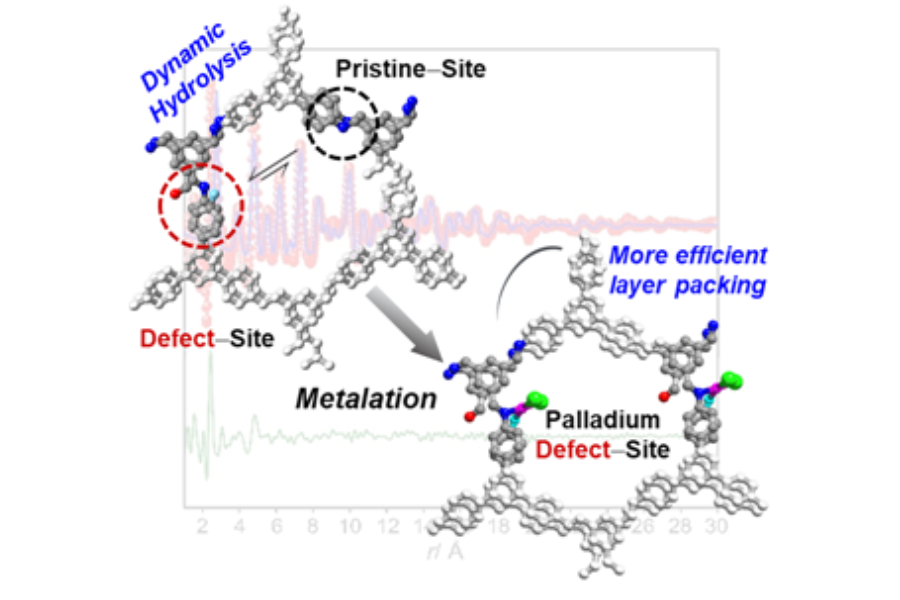Identification of the active sites in a catalytic porous material by applying computational chemistry
Covalent Organic Frameworks (COFs) are an emerging class of porous materials with fascinating applications in sensing, energy storage and catalysis. In the current work*, the active site of a palladium-loaded COF catalyst active in Suzuki-Miyaura couplings is unveiled by applying advanced X-ray characterization techniques, such as Pair Distribution Function (PDF) analysis and X-ray Absorption Spectroscopy (XAS) in combination with computational chemistry methods based on Density Functional Theory (DFT). The Suzuki reaction, a cross-coupling transformation, is widely used in organic synthesis because of the low toxicity and the mild conditions.
In this work, a porous imine-linked COF is used as a platform to deposit catalytically active palladium species. Interestingly, the pristine COF material possesses local defects resulting from the reversible hydrolysis of the imine linkages, which are able to selectively bind catalytic palladium. One fundamental question is the identification of the structure of the palladium active sites, because of the existence of multiple binding sites where the palladium could be attached. Once the active site is unveiled, it can help us understand the catalytic mechanism and thus give new directions about how to improve the performance of the material. As a first step, DFT calculations were performed in order to characterize the defects and find the energetically most stable conformations after the hydrolysis. The DFT results show that the trans-defects, in which the amine and the aldehyde are pointing out towards different directions, are energetically more stable than the cis-defects (where amine and aldehydes are pointing towards the same direction). Subsequently, the energetics of the metalation reaction on both defect-free and defective COF materials was calculated. For the defect-free, only one binding site exists, which is the coordination to two imine groups. For the defective COF, multiple coordination sites exist, with the most stable conformation being the coordination of palladium to an imine and amine group simultaneously. The DFT results are in excellent agreement with advanced X-ray characterization techniques, such as the PDF analysis and the Extended X-ray Absorption Fine Structure (EXAFS) spectroscopy. An interesting conclusion of our work is that for increasing concentration of defects in the COF material, the defect sites (imine-amine) would play a key role in the catalytic cycle, because they are the preferred sites for the metalation with palladium.
(*) Unveiling the Local Structure of Palladium Loaded Into Imine-Linked Layered Covalent Organic Frameworks for Cross-Coupling Catalysis. Ignacio Romero-Muñiz, Andreas Mavrandonakis, Pablo Albacete, Alicia Vega, Valérie Briois, Félix Zamora, Ana E. Platero-Prats. Angewandte Chemie International Edition 2020, Volume 59, Issue 31, Pages 13013-13020. DOI: 10.1002/anie.202004197, http://dx.doi.org/10.1002/anie.202004197
More information: Andreas Mavrandonakis, Senior Assistant researcher, Electrochemical Processes Unit, andreas.mavrantonakis@imdea.org



